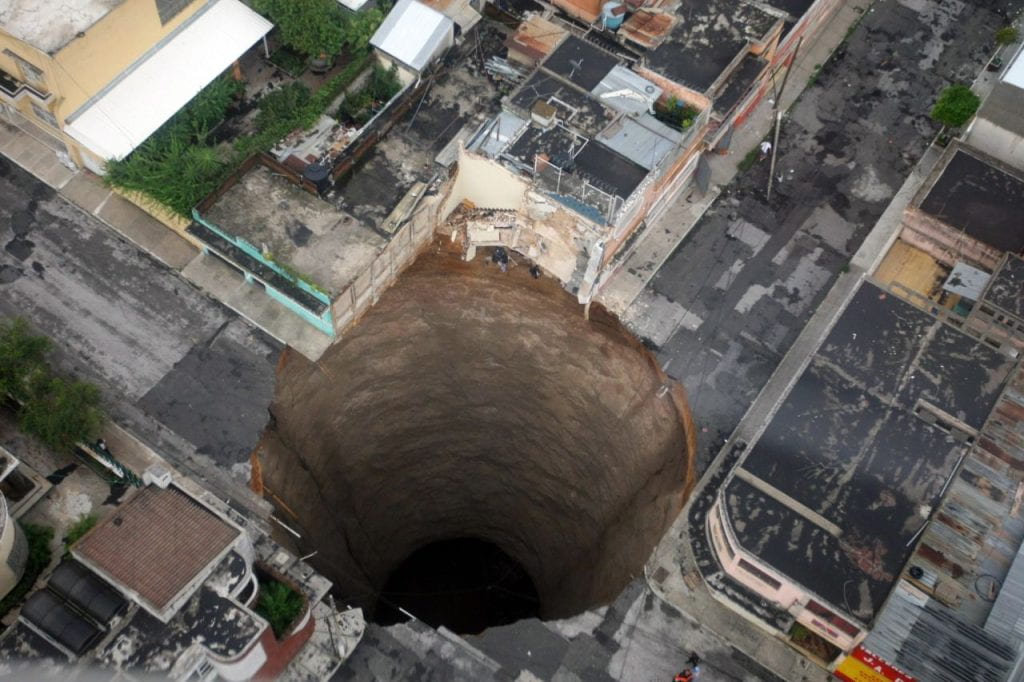Sinkholes: Can we forecast a catastrophic collapse?
It’s a frightening thought to imagine the ground below your feet or house suddenly collapsing and forming a big hole in the ground, but that’s the unfortunate reality. Fortunately, sinkholes rarely happen, but when they strike, tragedy can occur — in fact, a Florida man was mysteriously swallowed by a sinkhole underneath his bedroom not too long ago! As you can already guess, a sinkhole is simply a hole in the ground, ranging anywhere from shallow holes about one meter deep to pits more than fifty meters deep. But it forms when water dissolves surface rock, typically being of limestone which is easily eroded by the movement of water. They occur naturally, particularly where there is abundant rainfall like the Amazon Rainforest. Based on recent sightings and news stories, the most damage from sinkholes often occurs in Alabama, Florida, Kentucky, Missouri, Pennsylvania, Tennessee, and Texas here in the US.
In a landscape where limestone sits directly underneath the soil, water from rainfall collects in cracks in the stone. Gradually, as the limestone dissolves by erosion and is carried away, the cracks naturally widen until the ground above them becomes unstable and collapses. The collapse often happens very suddenly and without very much warning. Water collects in these collapsed sections, forming sinkholes. Sinkholes also form when the roofs of caves collapse and cave in. Sinkholes are often funnel-shaped, with the larger end open to the light and surface and the narrow end at the bottom of a pool. Water can drain through a sinkhole into an underground channel or a cave. When mud or fine residue plugs one of these underground caves, it fills with water to become a lake or a pond.
A cenote is a type of sinkhole that forms when the roof of an underground cave collapses, revealing the water to the surface. Cenotes are very common on the Yucatan Peninsula of Mexico. There are nearly two thousand cenotes on the Yucatan, and they are a primary source of freshwater for residents there. Interestingly, Ancient Mayans once believed cenotes were passageways to the underworld.
Sinkholes can definitely be human-induced at times, too. We can create sinkholes when building roads, aquifers, or other types of construction. Altering the land’s stability in these ways can weaken the underlying rock and make it more susceptible to sinkholes. Sinkholes can open up in the middle of busy streets or in neighborhoods, especially during heavy rainfall.
As a fun fact, the land surrounding the Dead Sea in the Middle East is prone to sinkholes because of the prevalence of rock salt, which is readily dissolved by water. Tourists who are unaware of sinkholes and even scientists studying sinkholes have been injured by falling into them.
Pearson, M. (2013, March 4). Sinkholes: Common, costly and sometimes deadly. CNN. Retrieved April 2, 2023, from https://www.cnn.com/2013/03/01/us/florida-sinkhole-explainer/index.html

Enjoy Reading This Article?
Here are some more articles you might like to read next: